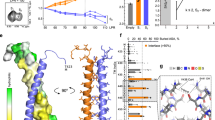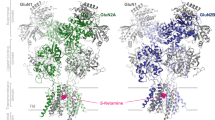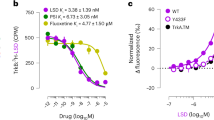Abstract
Previous studies suggest that brain-derived neurotrophic factor and its receptor TrkB are critically involved in the therapeutic actions of antidepressant drugs. We have previously shown that the antidepressants imipramine and fluoxetine produce a rapid autophosphorylation of TrkB in the rodent brain. In the present study, we have further examined the biochemical and functional characteristics of antidepressant-induced TrkB activation in vivo. We show that all the antidepressants examined, including inhibitors of monoamine transporters and metabolism, activate TrkB rapidly in the rodent anterior cingulate cortex and hippocampus. Furthermore, the results indicate that acute and long-term antidepressant treatments induce TrkB-mediated activation of phospholipase-Cγ1 (PLCγ1) and increase the phosphorylation of cAMP-related element binding protein, a major transcription factor mediating neuronal plasticity. In contrast, we have not observed any modulation of the phosphorylation of TrkB Shc binding site, phosphorylation of mitogen-activated protein kinase or AKT by antidepressants. We also show that in the forced swim test, the behavioral effects of specific serotonergic antidepressant citalopram, but not those of the specific noradrenergic antidepressant reboxetine, are crucially dependent on TrkB signaling. Finally, brain monoamines seem to be critical mediators of antidepressant-induced TrkB activation, as antidepressants reboxetine and citalopram do not produce TrkB activation in the brains of serotonin- or norepinephrine-depleted mice. In conclusion, our data suggest that rapid activation of the TrkB neurotrophin receptor and PLCγ1 signaling is a common mechanism for all antidepressant drugs.
Similar content being viewed by others
Log in or create a free account to read this content
Gain free access to this article, as well as selected content from this journal and more on nature.com
or
References
Airavaara M, Mijatovic J, Vihavainen T, Piepponen TP, Saarma M, Ahtee L (2006). In heterozygous GDNF knockout mice the response of striatal dopaminergic system to acute morphine is altered. Synapse 59: 321–329.
Altamura AC, Moro AR, Percudani M (1994). Clinical pharmacokinetics of fluoxetine. Clin Pharmacokinet 26: 201–214.
Altar CA (1999). Neurotrophins and depression. Trends Pharmacol Sci 20: 59–61.
Altar CA, Whitehead RE, Chen R, Wortwein G, Madsen TM (2003). Effects of electroconvulsive seizures and antidepressant drugs on brain-derived neurotrophic factor protein in rat brain. Biol Psychiatr 54: 703–709.
Balkowiec A, Katz DM (2002). Cellular mechanisms regulating activity-dependent release of native brain-derived neurotrophic factor from hippocampal neurons. J Neurosci 22: 10399–10407.
Berghuis P, Dobszay MB, Wang X, Spano S, Ledda F, Sousa KM et al (2005). Endocannabinoids regulate interneuron migration and morphogenesis by transactivating the TrkB receptor. Proc Natl Acad Sci USA 102: 19115–19120.
Bymaster FP, Zhang W, Carter PA, Shaw J, Chernet E, Phebus L et al (2002). Fluoxetine, but not other selective serotonin uptake inhibitors, increases norepinephrine and dopamine extracellular levels in prefrontal cortex. Psychopharmacology (Berlin) 160: 353–361.
Carlezon WA, Duman RS, Nestler EJ (2005). The many faces of CREB. Trends Neurosci 28: 436–445.
Carter BD, Zirrgiebel U, Barde YA (1995). Differential regulation of p21ras activation in neurons by nerve growth factor and brain-derived neurotrophic factor. J Biol Chem 270: 21751–21757.
Castrén E (2005). Is mood chemistry? Nat Rev Neurosci 6: 241–246.
Castrén E, Võikar V, Rantamäki T (2007). Role of neurotrophic factors in depression. Curr Opin Pharmacol 7: 18–21.
Chen AC, Shirayama Y, Shin KH, Neve RL, Duman RS (2001a). Expression of the cAMP response element binding protein (CREB) in hippocampus produces an antidepressant effect. Biol Psychiatr 49: 753–762.
Chen B, Dowlatshahi D, MacQueen GM, Wang JF, Young LT (2001b). Increased hippocampal BDNF immunoreactivity in subjects treated with antidepressant medication. Biol Psychiatr 50: 260–265.
Conti AC, Cryan JF, Dalvi A, Lucki I, Blendy JA (2002). cAMP response element-binding protein is essential for the upregulation of brain-derived neurotrophic factor transcription, but not the behavioral or endocrine responses to antidepressant drugs. J Neurosci 22: 3262–3268.
Coyle JT, Duman RS (2003). Finding the intracellular signaling pathways affected by mood disorder treatments. Neuron 38: 157–160.
Cryan JF, O'Leary OF, Jin SH, Friedland JC, Ouyang M, Hirsch BR et al (2004). Norepinephrine-deficient mice lack responses to antidepressant drugs, including selective serotonin reuptake inhibitors. Proc Natl Acad Sci USA 101: 8186–8191.
Drago F, Nicolosi A, Micale V, Lo Menzo G (2001). Placebo affects the performance of rats in models of depression: is it a good control for behavioral experiments? Eur Neuropsychopharmacol 11: 209–213.
Du J, Feng L, Zaitsev E, Je HS, Liu XW, Lu B (2003). Regulation of TrkB receptor tyrosine kinase and its internalization by neuronal activity and Ca2+ influx. J Cell Biol 163: 385–395.
Duman RS, Heninger GR, Nestler EJ (1997). A molecular and cellular theory of depression. Arch Gen Psychiatry 54: 597–606.
Egan MF, Kojima M, Callicott JH, Goldberg TE, Kolachana BS, Bertolino A et al (2003). The BDNF val66met polymorphism affects activity-dependent secretion of BDNF and human memory and hippocampal function. Cell 112: 257–269.
Frechilla D, Otano A, Del Rio J (1998). Effect of chronic antidepressant treatment on transcription factor binding activity in rat hippocampus and frontal cortex. Prog Neuropsychopharmacol Biol Psychiatry 22: 787–802.
Fumagalli F, Molteni R, Calabrese F, Frasca A, Racagni G, Riva MA (2005). Chronic fluoxetine administration inhibits extracellular signal-regulated kinase 1/2 phosphorylation in rat brain. J Neurochem 93: 1551–1560.
Haapasalo A, Sipola I, Larsson K, Akerman KE, Stoilov P, Stamm S et al (2002). Regulation of TRKB surface expression by brain-derived neurotrophic factor and truncated TRKB isoforms. J Biol Chem 277: 43160–43167.
Holoubek G, Noldner M, Treiber K, Muller WE (2004). Effect of chronic antidepressant treatment on beta-receptor coupled signal transduction cascade. Which effect matters most? Pharmacopsychiatry 37 (Suppl 2): S113–S119.
Hoshaw BA, Malberg JE, Lucki I (2005). Central administration of IGF-I and BDNF leads to long-lasting antidepressant-like effects. Brain Res 1037: 204–208.
Huang EJ, Reichardt LF (2001). Neurotrophins: roles in neuronal development and function. Annu Rev Neurosci 24: 677–736.
Itoh T, Tokumura M, Abe K (2004). Effects of rolipram, a phosphodiesterase 4 inhibitor, in combination with imipramine on depressive behavior, CRE-binding activity and BDNF level in learned helplessness rats. Eur J Pharmacol 498: 135–142.
Ji Y, Pang PT, Feng L, Lu B (2005). Cyclic AMP controls BDNF-induced TrkB phosphorylation and dendritic spine formation in mature hippocampal neurons. Nat Neurosci 8: 164–172.
Kankaanpää A, Meririnne E, Ariniemi K, Seppälä T (2001). Oxalic acid stabilizes dopamine, serotonin, and their metabolites in automated liquid chromatography with electrochemical detection. J Chromatogr B Biomed Sci Appl 753: 413–419.
Karege F, Bondolfi G, Gervasoni N, Schwald M, Aubry JM, Bertschy G (2005). Low brain-derived neurotrophic factor (BDNF) levels in serum of depressed patients probably results from lowered platelet BDNF release unrelated to platelet reactivity. Biol Psychiatry 57: 1068–1072.
Karege F, Perret G, Bondolfi G, Schwald M, Bertschy G, Aubry JM (2002). Decreased serum brain-derived neurotrophic factor levels in major depressed patients. Psychiatry Res 109: 143–148.
Koponen E, Rantamäki T, Võikar V, Saarelainen T, Macdonald E, Castrén E (2005). Enhanced BDNF signaling is associated with an antidepressant-like behavioral response and changes in brain monoamines. Cell Mol Neurobiol 25: 973–980.
Koponen E, Võikar V, Riekki R, Saarelainen T, Rauramaa T, Rauvala H et al (2004). Transgenic mice overexpressing the full-length neurotrophin receptor trkB exhibit increased activation of the trkB-PLCgamma pathway, reduced anxiety, and facilitated learning. Mol Cell Neurosci 26: 166–181.
Laifenfeld D, Karry R, Grauer E, Klein E, Ben-Shachar D (2005). Antidepressants and prolonged stress in rats modulate CAM-L1, laminin, and pCREB, implicated in neuronal plasticity. Neurobiol Dis 20: 432–441.
Lang UE, Hellweg R, Kalus P, Bajbouj M, Lenzen KP, Sander T et al (2005). Association of a functional BDNF polymorphism and anxiety-related personality traits. Psychopharmacology (Berlin) 180: 95–99.
Lee FS, Rajagopal R, Chao MV (2002a). Distinctive features of trk neurotrophin receptor transactivation by G protein-coupled receptors. Cytokine Growth Factor Rev 13: 11–17.
Lee FS, Rajagopal R, Kim AH, Chang PC, Chao MV (2002b). Activation of trk neurotrophin receptor signaling by pituitary adenylate cyclase-activating polypeptides. J Biol Chem 277: 9096–9102.
Lewis MA, Hunihan L, Franco D, Robertson B, Palmer J, Laurent DR et al (2006). Identification and characterization of compounds that potentiate NT-3-mediated trk receptor activity. Mol Pharmacol 69: 1396–1404.
Lowry OH, Rosebrough NJ, Farr AL, Randall RJ (1951). Protein measurement with the folin phenol reagent. J Biol Chem 193: 265–275.
Lu B (2003). BDNF and activity-dependent synaptic modulation. Learn Mem 10: 86–98.
Lucas G, Hendolin P, Harkany T, Agerman K, Paratcha G, Holmgren C et al (2003). Neurotrophin-4 mediated TrkB activation reinforces morphine-induced analgesia. Nat Neurosci 6: 221–222.
MacQueen GM, Ramakrishnan K, Croll SD, Siuciak JA, Yu G, Young LT et al (2001). Performance of heterozygous brain-derived neurotrophic factor knockout mice on behavioral analogues of anxiety, nociception, and depression. Behav Neurosci 115: 1145–1153.
Manji HK, Drevets WC, Charney DS (2001). The cellular neurobiology of depression. Nat Med 7: 541–547.
Mercier G, Lennon AM, Renouf B, Dessouroux A, Ramauge M, Courtin F et al (2004). MAP kinase activation by fluoxetine and its relation to gene expression in cultured rat astrocytes. J Mol Neurosci 24: 207–216.
Meyer-Franke A, Wilkinson GA, Kruttgen A, Hu M, Munro E, Hanson MG et al (1998). Depolarization and cAMP elevation rapidly recruit TrkB to the plasma membrane of CNS neurons. Neuron 21: 681–693.
Minichiello L, Calella AM, Medina DL, Bonhoeffer T, Klein R, Korte M (2002). Mechanism of TrkB-mediated hippocampal long-term potentiation. Neuron 36: 121–137.
Monteggia LM, Barrot M, Powell CM, Berton O, Galanis V, Gemelli T et al (2004). Essential role of brain-derived neurotrophic factor in adult hippocampal function. Proc Natl Acad Sci USA 101: 10827–10832.
Monteggia LM, Luikart B, Barrot M, Theobold D, Malkovska I, Nef S et al (2007). Brain-derived neurotrophic factor conditional knockouts show gender differences in depression-related behaviors. Biol Psychiatry 61: 187–197.
Nestler EJ, Barrot M, DiLeone RJ, Eisch AJ, Gold SJ, Monteggia LM (2002). Neurobiology of depression. Neuron 34: 13–25.
Nibuya M, Morinobu S, Duman RS (1995). Regulation of BDNF and trkB mRNA in rat brain by chronic electroconvulsive seizure and antidepressant drug treatments. J Neurosci 15: 7539–7547.
Nibuya M, Nestler EJ, Duman RS (1996). Chronic antidepressant administration increases the expression of cAMP response element binding protein (CREB) in rat hippocampus. J Neurosci 16: 2365–2372.
O'leary OF, Bechtholt AJ, Crowley JJ, Valentino RJ, Lucki I (2007). The role of noradrenergic tone in the dorsal raphe nucleus of the mouse in the acute behavioral effects of antidepressant drugs. Eur Neuropsychopharmacol 17: 215–226.
Page ME, Detke MJ, Dalvi A, Kirby LG, Lucki I (1999). Serotonergic mediation of the effects of fluoxetine, but not desipramine, in the rat forced swimming test. Psychopharmacology (Berlin) 147: 162–167.
Page ME, Lucki I (2002). Effects of acute and chronic reboxetine treatment on stress-induced monoamine efflux in the rat frontal cortex. Neuropsychopharmacology 27: 237–247.
Porsolt RD, Le Pichon M, Jalfre M (1977). Depression: a new animal model sensitive to antidepressant treatments. Nature 266: 730–732.
Pozzi L, Invernizzi R, Garavaglia C, Samanin R (1999). Fluoxetine increases extracellular dopamine in the prefrontal cortex by a mechanism not dependent on serotonin: a comparison with citalopram. J Neurochem 73: 1051–1057.
Rantamäki T, Knuuttila JE, Hokkanen ME, Castrén E (2006). The effects of acute and long-term lithium treatments on trkB neurotrophin receptor activation in the mouse hippocampus and anterior cingulate cortex. Neuropharmacology 50: 421–427.
Russo-Neustadt A, Beard RC, Cotman CW (1999). Exercise, antidepressant medications, and enhanced brain derived neurotrophic factor expression. Neuropsychopharmacology 21: 679–682.
Saarelainen T, Hendolin P, Lucas G, Koponen E, Sairanen M, MacDonald E et al (2003). Activation of the TrkB neurotrophin receptor is induced by antidepressant drugs and is required for antidepressant-induced behavioral effects. J Neurosci 23: 349–357.
Saarelainen T, Lukkarinen JA, Koponen S, Gröhn OH, Jolkkonen J, Koponen E et al (2000). Transgenic mice overexpressing truncated trkB neurotrophin receptors in neurons show increased susceptibility to cortical injury after focal cerebral ischemia. Mol Cell Neurosci 16: 87–96.
Santarelli L, Saxe M, Gross C, Surget A, Battaglia F, Dulawa S et al (2003). Requirement of hippocampal neurogenesis for the behavioral effects of antidepressants. Science 301: 805–809.
Segal RA, Bhattacharyya A, Rua LA, Alberta JA, Stephens RM, Kaplan DR et al (1996). Differential utilization of trk autophosphorylation sites. J Biol Chem 271: 20175–20181.
Shirayama Y, Chen AC, Nakagawa S, Russell DS, Duman RS (2002). Brain-derived neurotrophic factor produces antidepressant effects in behavioral models of depression. J Neurosci 22: 3251–3261.
Siuciak JA, Lewis DR, Wiegand SJ, Lindsay RM (1997). Antidepressant-like effect of brain-derived neurotrophic factor (BDNF). Pharmacol Biochem Behav 56: 131–137.
Sklar P, Gabriel SB, McInnis MG, Bennett P, Lim YM, Tsan G et al (2002). Family-based association study of 76 candidate genes in bipolar disorder: BDNF is a potential risk locus. brain-derived neurotrophic factor. Mol Psychiatry 7: 579–593.
Smith MA, Makino S, Kvetnansky R, Post RM (1995). Stress and glucocorticoids affect the expression of brain-derived neurotrophic factor and neurotrophin-3 mRNAs in the hippocampus. J Neurosci 15: 1768–1777.
Thome J, Sakai N, Shin K, Steffen C, Zhang YJ, Impey S et al (2000). cAMP response element-mediated gene transcription is upregulated by chronic antidepressant treatment. J Neurosci 20: 4030–4036.
Tiraboschi E, Tardito D, Kasahara J, Moraschi S, Pruneri P, Gennarelli M et al (2004). Selective phosphorylation of nuclear CREB by fluoxetine is linked to activation of CaM kinase IV and MAP kinase cascades. Neuropsychopharmacology 29: 1831–1840.
Weinstock M, Poltyrev T, Bejar C, Youdim MB (2002). Effect of TV3326, a novel monoamine-oxidase cholinesterase inhibitor, in rat models of anxiety and depression. Psychopharmacology 160: 318–324.
Yagasaki Y, Numakawa T, Kumamaru E, Hayashi T, Su T-P, Kunugi H (2006). Chronic antidepressants potentiate via sigma-1 receptors the brain-derived neurotrophic factor-induced signaling for glutamate release. J Biol Chem 281: 12941–12949.
Wong EH, Sonders MS, Amara SG, Tinholt PM, Piercey MF, Hoffmann WP et al (2000). Reboxetine: a pharmacologically potent, selective, and specific norepinephrine reuptake inhibitor. Biol Psychiatry 47: 818–829.
Wyneken U, Sandoval M, Sandoval S, Jorquera F, Gonzalez I, Vargas F et al (2006). Clinically relevant doses of fluoxetine and reboxetine induce changes in the TrkB content of central excitatory synapses. Neuropsychopharmacology 31: 2415–2423.
Xu H, Luo C, Richardson JS, Li XM (2004). Recovery of hippocampal cell proliferation and BDNF levels, both of which are reduced by repeated restraint stress, is accelerated by chronic venlafaxine. Pharmacogenom J 4: 322–331.
Xu H, Richardson JS, Li XM (2003). Dose-related effects of chronic antidepressants on neuroprotective proteins BDNF, bcl-2 and Cu/Zn-SOD in rat hippocampus. Neuropsychopharmacology 28: 53–62.
Zetterström TS, Pei Q, Madhav TR, Coppell AL, Lewis L, Grahame-Smith DG (1999). Manipulations of brain 5-HT levels affect gene expression for BDNF in rat brain. Neuropharmacology 38: 1063–1073.
Acknowledgements
We thank L Kaskela, O Nikkilä, M-E Hokkanen, J Knuuttila, and M Sairanen for excellent technical assistance; S Pastell and V Nousiainen for the animal care and OF O'Leary for critical reading of this paper and for her help in planning the pCPA administration. Fluoxetine for long-term treatments was kindly provided by Dr J Sirviö (OrionPharma, Turku, Finland). Moclobemide was obtained from Roche. This study was supported by grants from the Sigrid Juselius Foundation, the Academy of Finland, GlaxoSmithKline, the Research and Science Foundation of Farmos and the Finnish Cultural Foundation.
Author information
Authors and Affiliations
Corresponding author
Rights and permissions
About this article
Cite this article
Rantamäki, T., Hendolin, P., Kankaanpää, A. et al. Pharmacologically Diverse Antidepressants Rapidly Activate Brain-Derived Neurotrophic Factor Receptor TrkB and Induce Phospholipase-Cγ Signaling Pathways in Mouse Brain. Neuropsychopharmacol 32, 2152–2162 (2007). https://doi.org/10.1038/sj.npp.1301345
Received:
Revised:
Accepted:
Published:
Issue date:
DOI: https://doi.org/10.1038/sj.npp.1301345
Keywords
This article is cited by
-
The role of neurotrophic factors in novel, rapid psychiatric treatments
Neuropsychopharmacology (2024)
-
Mutation in the TRKB Cholesterol Recognition Site that blocks Antidepressant Binding does not Influence the Basal or BDNF-Stimulated Activation of TRKB
Cellular and Molecular Neurobiology (2024)
-
Evolutionarily conserved gene expression patterns for affective disorders revealed using cross-species brain transcriptomic analyses in humans, rats and zebrafish
Scientific Reports (2022)
-
Melatonergic Receptors (Mt1/Mt2) as a Potential Additional Target of Novel Drugs for Depression
Neurochemical Research (2022)
-
Modulation of DNA Methylation and Gene Expression in Rodent Cortical Neuroplasticity Pathways Exerts Rapid Antidepressant-Like Effects
Molecular Neurobiology (2021)



